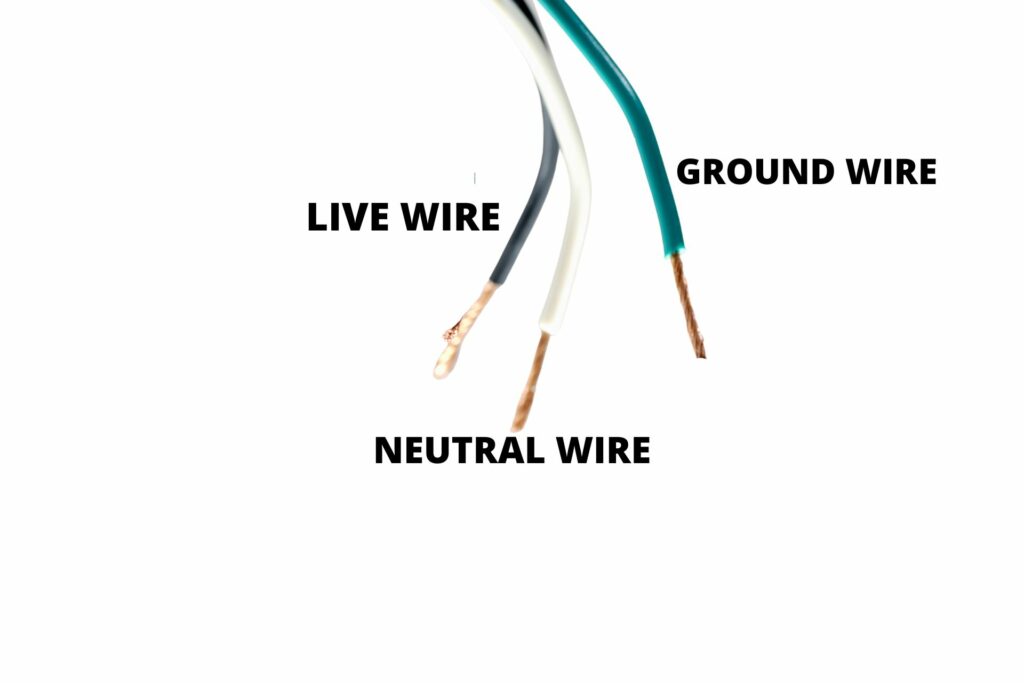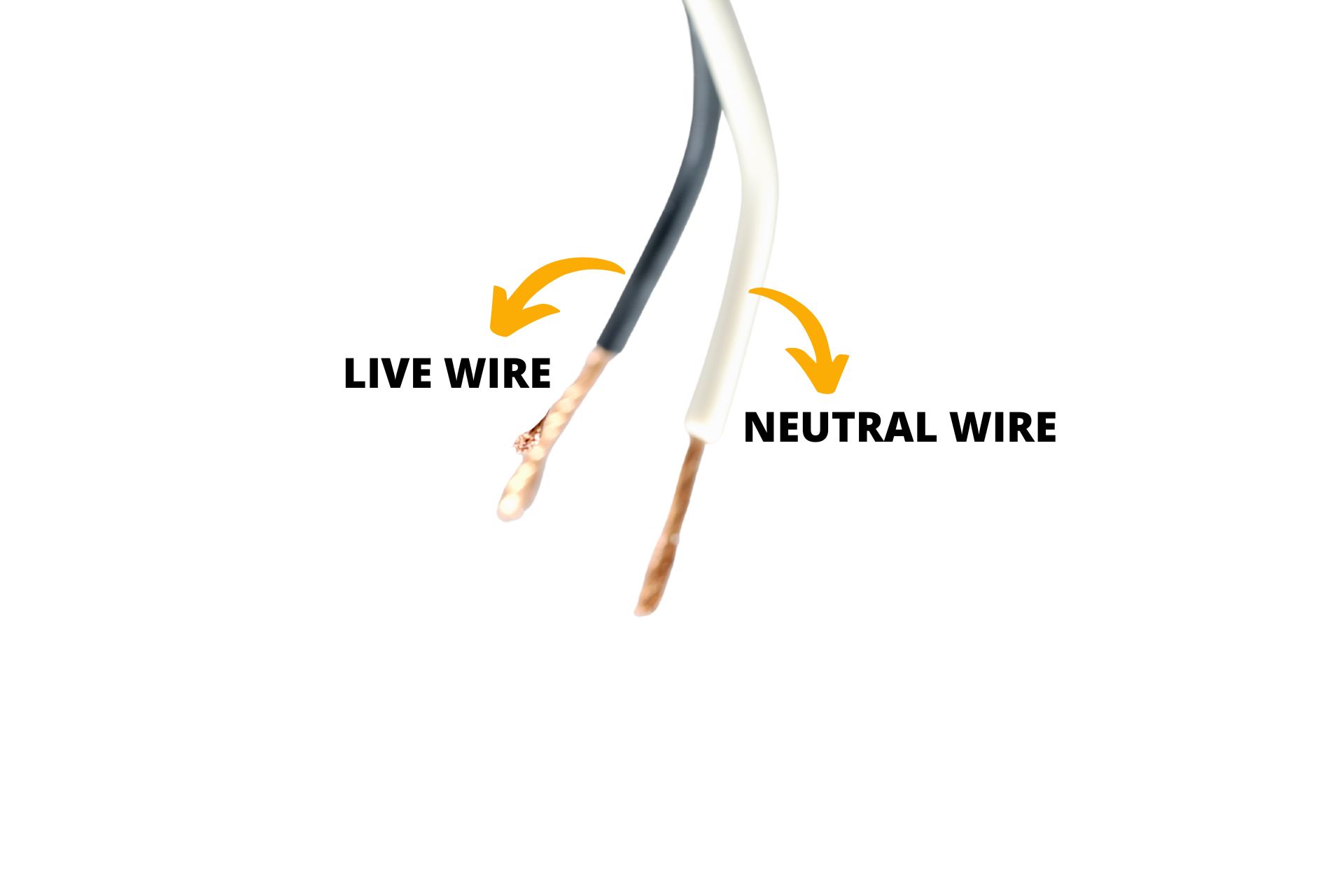Have you looked at the wires in your circuit? This guide will tell you what the labels and colors mean.
What Does L and N Mean On Electrical Wiring?
1). Conventional AC Circuit
A conventional circuit has three wires, namely: neutral, live, and ground. Each wire is labeled accordingly because it serves a specific purpose:
- Live – ‘L’ stands for ‘Live.’ It points to the live wire, the conductor that brings the current from the panel to the appliance.
- Neutral – ‘N’ stands for ‘Neutral.’ The neutral wire creates a return path for the current.
- Ground – The ground wire creates a path of least resistance for the excess current to follow. When a surge or short circuit occurs, the ground wire protects you from electrocution when you touch an appliance’s metal shell by sending the excess current to the earth.

The relationship between the ground, L, and N wires is critical because it influences the operations of your circuit:
- First of all, many people confuse neutral and ground wires. Engineers that use terms like ‘Ground’ and ‘Grounding’ to refer to both conductors tend to complicate matters. The ground and neutral wires are distinct. They perform different functions.
- The ground and neutral wires only connect in the breaker box. During an overload or short circuit, the current will flow through the ground wire to the point in the panel where it connects to the neutral, tripping the breaker.
- Neutral and live wires are similar because they both carry a current. The electricity flowing back to the panel through the N wire should match the electricity flowing from the panel through the L wire. This is why the neutral wire is so vital to a GFCI’s work. The GFCI detects ground faults by comparing the incoming and outgoing currents.
- Your household appliances cannot differentiate between neutral and live wires. Engineers distinguish between the two conductors in a plug by changing the size of the prongs to which the wires connect. The N prong is bigger than the L prong.
- Despite their similarities, you shouldn’t reverse the L and N wires by connecting these conductors to the wrong terminal, that is to say, running the L wire to the N terminal and the N wire to the L terminal. You risk electrocution. This situation is called ‘Reverse Polarity.’
2). Lighting Circuits
Lighting circuits are a little different because you have L1, L2, and COM terminals instead of the conventional live, neutral, and ground conductors and terminals:
- One-Way – Most one-way switch configurations include a COM and L1 terminal. You run the permanent live to COM and the switched live to L1. With one-way switches, you use one switch to control a light.
- Two-Way – Here, you use two switches to activate and deactivate the same light fixture. You see this configuration in lights above a stairway. You can turn the light on from the top or the bottom of the stairs. Unlike one-way switches, two-way configurations use COM, L1, and L2. You have a COM/L1 connection in one position and a COM/L2 connection in the other. Some switches use L1 and L2 for one-way switches and L1, L2, and L3 for two-way switches.
- Intermediate – This configuration uses three or more switches. The available terminals include L1, L1, and L2, L2.
3). Plug Socket
Plug sockets are fairly straightforward. One terminal is marked ‘L’ for ‘Live.’ The other one is marked ‘N’ for ‘Neutral.’ The earth terminal is either bare or green. Don’t expect the wires to feature similar markings. Although some of them are labeled.
Usually, the color tells you what the wire does and where you can connect it. If you have misgivings, consult an electrician about the interpretation of the colors and labels. Don’t tamper with the socket before de-energizing the circuit. Use a tester to confirm that the socket has no power.
4). Three Phase
Most residential settings use single-phase power. You find three-phase power in commercial settings. Three-phase power features L, L1, L2, L3, and N. ‘N’ is neutral.
5). DC Circuits And Wiring
Direct current is concerned with polarities. You have positive, negative, and ground wires. Common labels include:
- L+ and L- (Ungrounded)
- L+ and N (Negative Grounded)
- N and L- (Positive Grounded)
- L+, N, and L- (Three Wire Grounded DC)
Extension cords, 2-strand appliance cords, and speakers are equally obsessed with polarity. They use terms like ‘Positive’ and ‘Negative’ to describe each wire.
While some wires use color to identify the polarity, others emphasize the grooves and texture.
Is There Any Specific Color For L And N?
Yes, L and N wires have specific colors. However, those colors are not standardized. Each jurisdiction has organizations that determine the color. As such, the colors may change depending on the country. For instance:
Most Of Europe
- N – Blue
- L – Brown or Black
UK
- N – Blue or Black
- L – Brown or Red
USA
- N – White
- L – Black or Red
Canada
- N – White
- L – Black or Red
In the UK, live wires were red. But they eventually became brown. The black neutral wires became blue. This shows the importance of remaining abreast of changes in your country’s code.
If you fail to adapt to these regulations, you may miswire your circuit, leading to reverse polarity. This is why laypeople are encouraged to consult local electricians. A local electrician knows what all the colors mean.
How To Connect L And N Wires?
The ‘L’ wire is the hot black or red conductor. You connect it to the hot terminal. Sometimes, this terminal is labeled with an ‘L.’ The ‘N’ wire is the white neutral wire. You run it to the neutral terminal. This terminal is also labeled with an ‘N.’ The goal is to prevent mistakes.
You don’t want the L and N wires to touch. This occurrence will result in a short circuit. The arcing may start a fire.
Related post:

